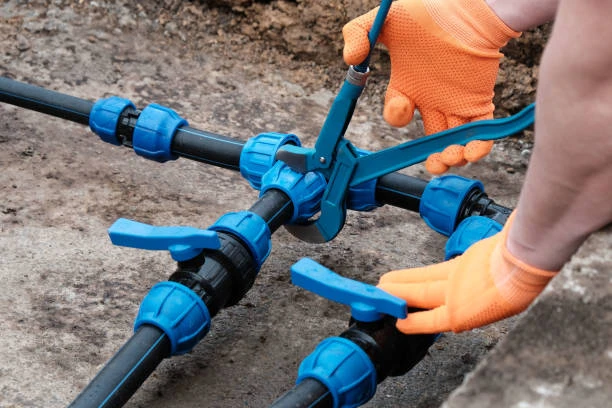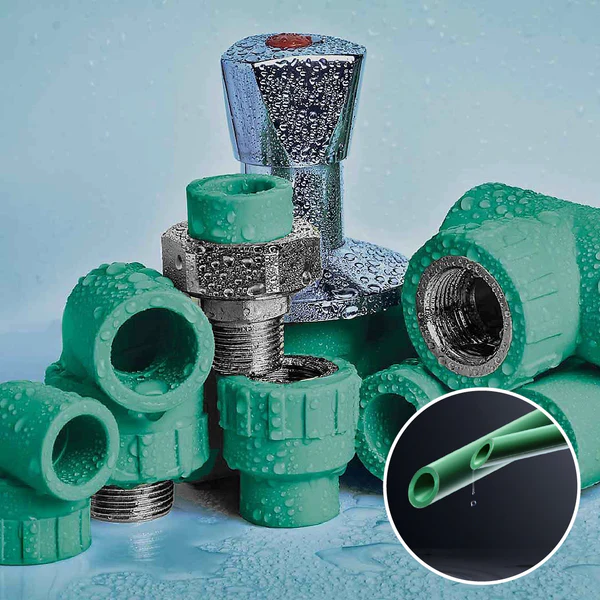Introduction to Plastic Pipe and Fittings
Plastic pipe and fittings are integral to modern plumbing and water distribution systems. Their versatility, cost-effectiveness, and durability make them the preferred choice for residential, commercial, and industrial applications. With various materials available, plastic pipes offer specific advantages depending on the requirements of the system.
What is the Plastic Pipe and Fittings Association (PPFA)?
The Plastic Pipe and Fittings Association (PPFA) is a trade association representing manufacturers, suppliers, and distributors of plastic piping products. Established with the goal of promoting the use of plastic pipe systems, the PPFA ensures that all products meet stringent safety, environmental, and performance standards. The association works closely with various regulatory bodies and industry stakeholders to shape the future of plastic piping.
History of Plastic Pipes: A Brief Overview
The plastic piping industry has seen remarkable growth over the last few decades. While metal pipes like copper and iron dominated plumbing for years, plastic materials began to gain popularity in the mid-20th century due to their lower costs, corrosion resistance, and ease of installation. The introduction of materials like PVC and HDPE revolutionized the use of pipes in construction, leading to widespread adoption.
Benefits of Plastic Pipes Over Traditional Materials
Plastic pipes offer several advantages over traditional materials like copper and steel:
- Corrosion resistance: Plastic pipes do not rust or corrode, which extends their lifespan significantly.
- Flexibility: They are more flexible, making them ideal for complex plumbing systems.
- Cost-effectiveness: Plastic pipes are generally cheaper to produce and install compared to metal pipes.
- Lightweight: Easier to transport and handle, reducing labor and shipping costs.
Types of Plastic Pipes and Fittings
The plastic piping industry has evolved to offer various types of pipes and fittings, each suited for specific applications. Below are some of the most commonly used materials:
PVC Pipes
PVC (Polyvinyl Chloride) is one of the most popular types of plastic pipes due to its low cost and versatility. It is used in a wide range of applications, from drainage systems to water supply lines.
CPVC Pipes
Chlorinated Polyvinyl Chloride (CPVC) pipes are an enhanced version of PVC, designed to handle higher temperatures. CPVC pipes are often used in hot water systems and industrial applications.
HDPE Pipes
High-Density Polyethylene (HDPE) pipes boast high strength and durability. Construction professionals often use them in water mains, gas pipelines, and sewage systems due to their resistance to chemicals and extreme conditions.
PEX Pipes
Cross-linked Polyethylene (PEX) pipes are widely used in plumbing systems, especially for hot and cold water distribution. They offer excellent flexibility and are resistant to scaling and corrosion.
The Role of PPFA in Quality Assurance
The PPFA ensures that plastic pipe and fitting products adhere to high-quality standards. By setting benchmarks for durability, performance, and safety, the association helps to maintain the credibility of plastic piping systems in various industries.
Environmental Impact of Plastic Piping
While plastic piping has several environmental benefits, such as reducing energy usage in manufacturing and minimizing leakage, concerns about plastic waste persist. The PPFA advocates for sustainable practices, including the recycling of plastic pipes and promoting the use of eco-friendly materials.
Technological Advancements in Plastic Pipes
Innovation has played a pivotal role in enhancing the performance of plastic pipes. Recent advancements include improved resistance to high pressure, temperature fluctuations, and the development of smart pipes with sensors to detect leaks and blockages.
Common Applications of Plastic Pipes
Plastic pipes are used in various sectors:
- Residential plumbing
- Commercial and industrial water systems
- Agricultural irrigation
- Sewage and drainage systems
Plastic Pipe Usage in Modern Plumbing Systems
In modern plumbing, plastic pipes have become the go-to material due to their ease of installation, low maintenance requirements, and long lifespan. They are used for both water distribution and waste management in homes and businesses.
Regulations and Standards Set by the PPFA
The PPFA works closely with government bodies and international organizations to establish standards that ensure the safe and efficient use of plastic pipes. These regulations help prevent issues such as pipe degradation, contamination, and inefficient water flow.
PPFA’s Contributions to Sustainable Water Management
Sustainable water management is one of the key priorities of the PPFA. The association promotes the use of high-quality plastic pipes that minimize leaks and improve water distribution, ensuring efficient resource use.
Plastic Pipes in Infrastructure Development
Plastic pipes play a critical role in infrastructure projects, particularly in urban water distribution networks, gas pipelines, and sewage systems. Their flexibility, durability, and cost-efficiency make them the ideal choice for large-scale projects.

Challenges Faced by the Plastic Pipe Industry
Despite the numerous advantages, the plastic pipe industry faces challenges such as environmental concerns related to plastic waste, competition from alternative materials, and fluctuating raw material prices.
Future Trends in Plastic Pipe and Fittings Industry
The future of the plastic pipe industry looks promising, with growing demand from emerging markets and continuous innovations in material science. Smart piping systems, increased sustainability efforts, and new applications in green building initiatives are expected to drive future growth.
Conclusion
The Plastic Pipe and Fittings Association (PPFA) is at the forefront of advancing the plastic piping industry. By ensuring quality, promoting sustainability, and driving innovation, the PPFA helps shape the future of infrastructure and water management. As the demand for efficient, durable, and eco-friendly piping systems grows, plastic pipes and fittings are likely to remain a key component in modern construction and utilities.
FAQs
- What are the benefits of using plastic pipes in plumbing? Plastic pipes are lightweight, corrosion-resistant, easy to install, and cost-effective, making them an ideal choice for various plumbing applications.
- How does the PPFA ensure the quality of plastic pipes? The PPFA sets stringent standards for manufacturing and performance, ensuring that plastic pipes meet regulatory and safety requirements.
- What are HDPE pipes commonly used for? HDPE pipes are widely used in water mains, gas pipelines, and sewage systems due to their strength, flexibility, and chemical resistance.
- Are plastic pipes environmentally friendly? While there are concerns about plastic waste, plastic pipes can be eco-friendly when manufactured using sustainable practices, and many types are recyclable.
- What is the future outlook for the plastic piping industry? The plastic piping industry is expected to grow, driven by innovations in smart piping systems, increasing demand in emerging markets, and sustainability efforts.


















